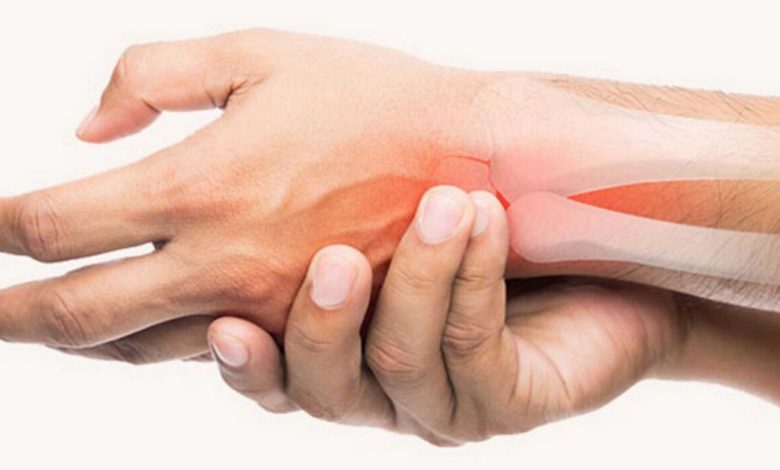Contracture deformity, contracture: what is this, causes, symptoms, diagnostics, treatment, prevention

Contracture deformity; Deformity – contracture
Contracture develops, when normally elastic tissues are replaced by non-elastic fibrous tissues. This tissue makes it difficult for the area to stretch and prevent normal movement..
Contractures mainly occur in the skin, tissues underneath., as well as in muscle, tendons and ligaments, surrounding the joint. They affect range of motion and function in a specific part of the body.. Pain is often also present..
Contracture can affect any joint in the body, but most often occurs in the elbow, knee, shoulder and hip joints. Contracture can be caused by various diseases, including burns., joint diseases, spinal cord injury and certain neurological disorders. Although contracture deformity is not usually life-threatening, it can significantly affect a person's mobility and quality of life.
What is contracture?
A contracture is a chronic contraction of a muscle or group of muscles., leading to a decrease in the range of motion in the joint and permanent deformation of the affected area. Contracture can affect any joint in the body, but most often occurs in the elbow, knee, shoulder and hip joints.
The severity of the disorder varies greatly from person to person., depending on the underlying cause and degree of contracture. In mild cases, contracture deformity may be barely noticeable., whereas in more severe cases contracture can cause significant impairment of mobility and function.
Causes of contractures
Contracture can be caused by various diseases, including:
- Burns. Burns can cause contracture deformity, when the skin becomes scarred, which leads to shortening and compaction of muscles and tendons.
- Joint diseases. Some joint diseases, such as rheumatoid arthritis and osteoarthritis, can cause contracture deformity due to inflammation and destruction of the joint.
- Spinal cord injury. Spinal cord injuries can cause contracture due to weakening of the muscles and tendons in the affected area.
- Neurological disorders. Some neurological disorders, such as cerebral palsy and stroke, can cause contracture due to weakening of muscles and tendons.
- Hereditary diseases (eg, muscular dystrophy).
- Severe muscle and bone injuries.
Symptoms contracture
The main symptom of contracture is a decrease in the range of motion in the joints., which can make it difficult to carry out daily activities, such as walking, dressing and bathing. Additional symptoms of contractures may include:
- Pain and stiffness in the affected joint
- Swelling of the affected joint
- Limited range of motion in the affected joint
- Visible deformity of the affected joint
When to contact a healthcare professional
If you or someone you know is experiencing decreased range of motion in a joint, joint pain and stiffness or visible deformity of the joint, it is important to see a doctor as soon as possible. A healthcare professional can diagnose the underlying cause of the contracture deformity and recommend an appropriate treatment plan.
Questions, that your doctor may ask
When you visit a healthcare provider for a contracture, your doctor, probably, ask you the following questions:
- How long have you been experiencing reduced range of motion in your joints?
- Where is the reduced range of motion in the joint located??
- Does the decrease in joint range of motion cause pain or discomfort??
- Are there any other symptoms, associated with decreased range of motion in the joints?
- Have you been diagnosed with any diseases, which can cause a decrease in the range of motion in the joints?
Diagnosis of contractures
To diagnose contracture, the doctor will first do a physical examination of the affected joint. During a physical exam, your doctor will check the range of motion of the affected joint and look for any visible deformities.. Your doctor may also order imaging tests, such as x-ray, computed tomography or MRI, to get a clearer picture of the affected joint.
Treatment of contractures
The goal of contracture treatment is to restore range of motion and reduce pain and stiffness in the affected joint.. Treatment may include a combination of physical therapy, medication, new, braces and surgery.
- Physiotherapy. Physical therapy can help restore range of motion in the affected joint by stretching and strengthening muscles and tendons..
- Medicines. Your doctor may prescribe medication, such as non-steroidal anti-inflammatory drugs (NSAIDs) and corticosteroids, to relieve pain and inflammation in the affected joint.
- Tires and braces. Splints and braces can help immobilize the affected joint and reduce pain and inflammation..
- Surgical intervention. In some cases, surgery may be required to release contracted muscles and tendons and restore range of motion in the affected joint..
Contracture home treatment
There are several home treatments, that can help deal with contracture.
- Recreation. Resting the affected joint may help reduce pain and inflammation..
- Ice and heat. Applying ice and heat to an injured joint can help reduce pain and inflammation..
- Soft stretch. Light stretching exercises can help restore range of motion in the affected joint..
- Massage. Massaging the affected joint can help reduce pain and inflammation..
Prevention of contractures
Contracture deformity can often be prevented, taking steps to protect the affected joint, eg, avoiding action, that cause excessive stress on the joint, wearing protective equipment when participating in sports or other physical activities and maintaining a healthy weight. Besides, if you are at risk of contractures due to a medical condition, it is important to follow your doctor's instructions for treatment and monitor the affected joint for any changes.
Used sources and literature
Campbell TM, Dudek n, Trudel G. Joint contractures. In: Frontera, WR, Silver JK, Rizzo TD Jr, eds. Essentials of Physical Medicine and Rehabilitation. 4th ed. Philadelphia, PA: Elsevier; 2019:chap 127.
Miller HR, Azar FM, Throckmorton TW. Shoulder and elbow injuries. In: Azar FM, Beaty JH, eds. Campbell’s Operative Orthopaedics. 14th ed. Philadelphia, PA: Elsevier; 2021:chap 46.
